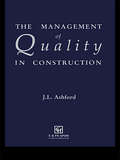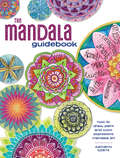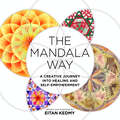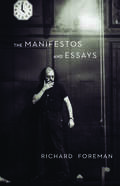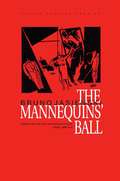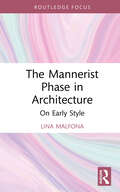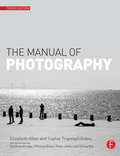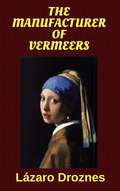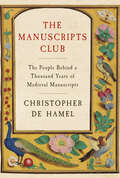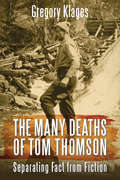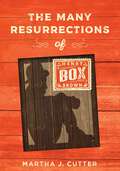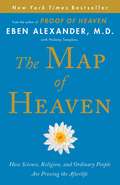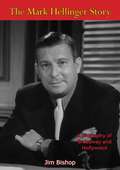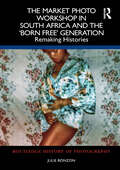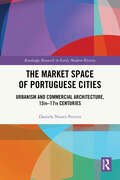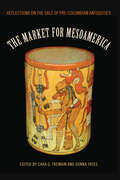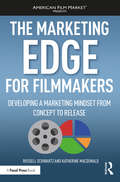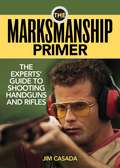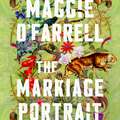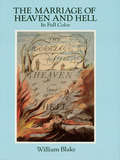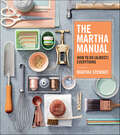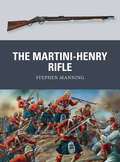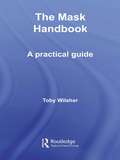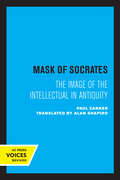- Table View
- List View
The Management of Quality in Construction
by J.L. AshfordThe quality of a product or service is a measure of its ability to satisfy customer requirements. This satisfaction can be assured by the operation of a quality system which will ensure that specified requirements are met consistently and economically. The Management of Quality in Construction provides the reader with a knowledge of the principles of quality management and an understanding of how they may successfully be applied in the particular circumstances of the construction industry. The areas covered range from an historical review of traditional methods of assuring quality in the industry and how contractual arrangements have evolved, to an interpretation of quality system standards in the context of construction. Examples are given which highlight specific areas, and specialist chapters on organization structures and the techniques of quality auditing are included.
The Mandala Guidebook: How to Draw, Paint and Color Expressive Mandala Art
by Kathryn CostaRelax, create and connect with mandala art. Do you love coloring mandalas? You're not alone! Adult coloring books are gaining in popularity every day. Do you want to learn how to draw and color your own mandalas? In The Mandala Guidebook, Kathryn Costa shows you how with easy instructions perfect for the beginner. You'll find a wide range of projects, each with beautifully illustrated step-by-step instructions covering more design styles and artistic mediums than any other book out there. Simply put, a mandala is a circle with a design in the center, but psychologists and spiritual leaders have used mandalas as a tool for self-reflection and self-exploration through the ages. Mandalas have intrigued cultures around the world, from Celtic spirals and Indian mehndi to medieval church labyrinths. And now it's your turn! If you can write the alphabet, you can create beautiful and expressive mandalas. Journey with Kathryn, creator of the "100 Mandalas Challenge," to create spontaneous and spirited mandala art:Enjoy prompts and questions to practice self-discovery, gratitude, relaxation, meditation and explore your unique talents and artistic path as you createDiscover 24 demonstrations with clear and colorful step-by-step instructions to master the mechanics of making mandalas--both freehand and geometrically symmetrical designsExplore mixed media and textural painting techniques within the boundaries of a circle using everything from a simple pen and paper to watercolor, collage, acrylic and stamped Gelli plateGet pattern inspiration and discover how to play with color using common palettes from the world around youSet your intention and learn how to use mandalas to solve problems, let go of fear, lean into love and gain clarity and insight as you create!
The Mandala Way: A Creative Journey into Healing and Self-empowerment
by Eitan KedmyWith gorgeous artwork, practical meditation exercises and accessible drawing guides, this is the only mandala book that offers a journey of self-discovery by showing how to create your own mandalas.Discover the power of mandalas with this drawing guide designed to help you look inward and give expression to your inner world of thoughts, feelings and experiences. Accessible for both artists and beginners, The Mandala Way acts as a gateway to the rich, multi-dimensional world of the mandala.Working your way through 16 mandalas, Eitan Kedmy offers an introduction, step-by-step line drawings, full-colour mandala art and a meditation for each mandala. The first eight lessons introduce you to basic templates, such as the Seed of Life and the Star of David. In the final eight lessons you will embark on a personal journey through the body&’s chakras:Sacral Chakra Mandala to help you feel more present. Heart Chakra Mandala to aid you in finding unconditional love within yourself.Throat Chakra Mandala to sharpen your self-expression. Combining creativity and fun with self-discovery and spiritual growth, the act of drawing mandalas helps to ease anxiety and insecurity, bring about clarity of thought and enhance our feelings of self-worth and self-confidence.
The Manifestos and Essays
by Richard Foreman"Richard Foreman reinvented dialogue, action, sound, stage design, and philosophical groundwork as no other stage artist in our history."--PEN/Laura Pels Master American Dramatist Award citation These writings, collected from two earlier books now long out-of-print along with two recent interviews, provide a fascinating window into Richard Foreman's singular mind and creative process. Also included is The Gods Are Pounding My Head! (AKA Lumberjack Messiah), his last play before transitioning to more multi-media work. Richard Foreman has written, directed, and designed more than fifty of his own plays, both internationally and at his Ontological-Hysteric Theater, which he founded in 1968. He has received many OBIE awards, an NEA Lifetime Achievement Award, and a MacArthur "Genius" Fellowship.
The Mannequins' Ball
by Daniel Gerould Bruno JaslenskiThis play, by Futurist poet Bruno Jasienski, is an outstanding example of the joining of left-wing politics and avant-garde interest in human mechanization that characterized the experimental theatre of Poland in the inter-war years. Stalinism and the purges cut short Jasienski's career and prevented productions of his play for many years - except for a brilliant constructivist staging in Prague in 1933. The Mannequins' Ball can now take its place along with Capek's R.U.R. as one of the major twentieth-century dramas making use of the themes and techniques of human automata. Reproduced in this volume are the eight woodcuts by Moor which accompanied the original Moscow publication in 1931.
The Mannerist Phase in Architecture: On Early Style
by Lina MalfonaThis book frames mannerism as an inescapable stage in the creative process. The mannerist phase is usually an adolescent stage of language, preceding the consolidation of thought. It is that period, as fertile as it is anguished, in which each author engages in a dialogue with his or her past, reinterpreting or completely transforming it. The mannerist phase is that period when architects design spaces, not yet knowing what it means to design places.The mannerist condition can be short-lived or protracted until it becomes systemic. In all cases, it is a period of research experienced by architects who are also intellectuals, that is, architects who operate between the practice of making and the elaboration of a personal design philosophy, within a perspective in which history, theory and criticism are intertwined. In this sense, the mannerist condition can also be defined as the style of the academic thought.The book explores the work of many authors, analyzing their relationship to history and how they managed to emerge from its shadow. Of interest to academics, scholars and students exploring the theory of architecture, this book offers an unconventional, transtemporal reading of mannerism, where facts, events and images belonging to different times and spaces are juxtaposed to generate a series of temporal paradoxes.
The Manual of Photography and Digital Imaging
by Elizabeth Allen Sophie TriantaphillidouThe tenth edition of The Manual of Photography is an indispensable textbook for anyone who is serious about photography. It is ideal if you want to gain insight into the underlying scientific principles of photography and digital imaging, whether you are a professional photographer, lab technician, researcher or student in the field, or simply an enthusiastic amateur. This comprehensive guide takes you from capture to output in both digital and film media, with sections on lens use, darkroom techniques, digital cameras and scanners, image editing techniques and processes, workflow, digital file formats and image archiving. This iconic text was first published in 1890 and has aided many thousands of photographers in developing their own techniques and understanding of the medium. Now in full colour, The Manual of Photography still retains its clear, reader-friendly style and is filled with images and illustrations demonstrating the key principles. Not only giving you the skills and know-how to take stunning photographs, but will also allowing you to fully understand the science behind the creation of great images.
The Manufacturer of Vermeers
by Lázaro DroznesThe Manufacturer of Vermeers. The incredible story of Hans Van Meegeren, the forger of Vermeers. Hans van Meegeren, was a Dutch painter who during the Second World War produced better Vermeers than the original ones. He was able to fool the entire artistic community and Herman Goering himself. Finally, he had to confess his forgeries to save himself from the death penalty. This dramatic fiction is based on the incredible story of Hans van Meegeren in the 1930s and during the Second World War, when he succeeded in forging and selling 6 Vermeers and 2 Franz Hals for a sum, updated to date, estimated at 100 million dollars. One of the Vermeers was purchased by Herman Goering, second in the hierarchy of the Third Reich. When the Second World War ended, van Meegeren faced the accusation of traitor to his homeland and had to confess his forgeries to save his life. These confessions were an earthquake in the pictorial community in Holland and the entire world, given that his forgeries had been accepted unanimously, and one of them, the “Christ at Emmaus” was considered the best Vermeer of all. This fiction, based on real facts, leads us to reflect on the concept of authenticity in art and the validity of the traditional concepts of truth and beauty: Does a painting stop being beautiful when it is proven that it is a forgery?
The Manuscripts Club: The People Behind a Thousand Years of Medieval Manuscripts
by Christopher de HamelThe acclaimed author of Meetings with Remarkable Manuscripts introduces us to the extraordinary keepers and companions of medieval manuscripts over a thousand years of historyThe illuminated manuscripts of the Middle Ages are among the greatest works of European art and literature. We are dazzled by them and recognize their crucial role in the transmission of knowledge. However, we generally think much less about the countless men and women who made, collected and preserved them through the centuries, and to whom they owe their existence.This entrancing book describes some of the extraordinary people who have spent their lives among illuminated manuscripts over the last thousand years: a monk in Normandy, a prince of France, a Florentine bookseller, an English antiquary, a rabbi from central Europe, a French priest, a Keeper at the British Museum, a Greek forger, a German polymath, a British connoisseur and the woman who created the most spectacular library in America—all of them members of what Christopher de Hamel calls the Manuscripts Club.This exhilarating fraternity, and the fellow enthusiasts who come with it, throw new light on how manuscripts have survived and been used by very different kinds of people in many different circumstances. Christopher de Hamel&’s unexpected connections and discoveries reveal a passion that crosses the boundaries of time. We understand the manuscripts themselves better by knowing who their keepers and companions have been.In 1850 (or thereabouts) John Ruskin bought his first manuscript &“at a bookseller&’s in a back alley.&” This was his reaction: &“The new worlds which every leaf of this book opened to me, and the joy I had in counting their letters and unravelling their arabesques as if they had all been of beaten gold—as many of them were—cannot be told.&” The members of de Hamel&’s club share many such wonders, which he brings to us with scholarship, style and a lifetime&’s experience.
The Many Deaths of Tom Thomson: Separating Fact from Fiction
by Gregory KlagesA National Post Bestseller! How did Tom Thomson die in the summer of 1917? Was landscape painter Tom Thomson shot by poachers, or by a German-American draft dodger? Did a blow from a canoe paddle knock him unconscious and into the water? Was he fatally injured in a drunken fight? Did he end his life out of fear of being forced to marry his pregnant girlfriend? Commemorating the one-hundredth anniversary of the death of the renowned Canadian landscape painter, The Many Deaths of Tom Thomson offers an authoritative review of the historical record, as well as some theories you might not have thought of in a hundred years. Cultural historian Gregory Klages surveys first-hand testimony and archival records about Thomson’s tragic demise, attempting to sort fact from legend in the death of this Canadian icon.
The Many Resurrections of Henry Box Brown
by Martha CutterOn March 23, 1849, Henry Brown climbed into a large wooden postal crate and was mailed from slavery in Richmond, Virginia, to freedom in Philadelphia, Pennsylvania. “Box Brown,” as he came to be known after this astounding feat, went on to carve out a career as an abolitionist speaker, actor, magician, hypnotist, and even faith healer, traveling the United States, the United Kingdom, and Canada until his death in 1897.The Many Resurrections of Henry Box Brown is the first book to show how subversive performances were woven into Brown’s entire life, from his early days practicing magic in Virginia while enslaved, to his last shows in Canada and England in the 1890s. It recovers forgotten elements of Brown’s history to illustrate the ways he made himself a spectacle on abolitionist lecture circuits via outlandish performances, and then fell off these circuits and went on to reinvent himself again and again. Brown’s stunts included creating a moving panoramic picture show about his escape; parading through the streets dressed as a “Savage Indian” or “African Prince”; convincing hypnotized individuals that they were sheep who would gobble down raw cabbage; performing magic, dark séances, and ventriloquism; and even climbing back into his “original” box to jump out of it on stage.In this study, Martha J. Cutter analyzes contemporary resurrections of Brown’s persona by leading poets, writers, and visual artists. Both in Brown’s time and in ours, stories were created, invented, and embellished about Brown, continuing to recreate his intriguing, albeit fragmentary and elusive, story. The Many Resurrections of Henry Box Brown fosters a new understanding not only of Brown’s life but of modern Black performance art that provocatively dramatizes the unfinished work of African American freedom.
The Map of Heaven: How Science, Religion, and Ordinary People Are Proving the Afterlife
by Ptolemy Tompkins Eben AlexanderThe author of the #1 New York Times bestseller Proof of Heaven teams up with the sages of times past, modern scientists, and with ordinary people who have had profound spiritual experiences to show the reality of heaven and our true identities as spiritual beings.When Proof of Heaven was published, some readers contacted Dr. Eben Alexander to argue that his near-death experience was impossible. But many more have written to say his story resonated with them in profound ways. Thanks to them, Dr. Alexander came to realize that sharing his story has allowed people to rediscover what so many in ancient times knew: there is more to life--and to the universe--than this single earthly life. Dr. Alexander met and heard from thousands of individuals whom his story has affected. He, with coauthor Ptolemy Tompkins, also studied what the world's religious traditions, philosophers, and scientists have had to say about the soul's survival of death. He has been deeply surprised at how often those voices from the past sync up with what he hears from people today. In The Map of Heaven, he shares some of the stories that people have told him and links them to what the world's spiritual traditions and its latest scientific insights have to say about the journey of the soul. Part metaphysical and scientific detective story, part manual for living, The Map of Heaven explores humankind's spiritual history and the progression of modern science from its birth in the seventeenth century, showing how we forgot, and are now at last remembering, who we really are and what our destiny truly is.
The Mark Hellinger Story: A Biography of Broadway and Hollywood
by Jim BishopMark Hellinger, beloved newspaperman, whose Broadway column was read daily by 22,000,000 people, and whose years as a Hollywood producer were marked by such outstanding successes as “High Sierra,” “The Killers,” and “Naked City,” died in 1947 in his forty-fifth year. In this book, Jim Bishop, who was his secretary, takes us behind the scenes to live again, the life of a man who “went everywhere, saw everything, and did everything—without exultation or remorse.”Rich with the nostalgic echoes of a note-too-distant past, THE MARK HELLINGER STORY is a magnificent account of a fabulous era—Broadway of the twenties and thirties, from the colossal glamour of the Follies, Vanities, and Scandals to the trenchant wit and lilting tunes of the Little Shows, with the heady smell of printer’s ink and the roar of the night presses; the vast canvas of Hollywood in the silent days, and its sudden rebirth with sound.It is the story, too, of a man who crammed into a lifetime more living than most people will ever know. In the words of Jim Bishop, Hellinger “spent time as though he had stolen it and couldn’t find a fence.”
The Market Photo Workshop in South Africa and the 'Born Free' Generation: Remaking Histories (Routledge History of Photography)
by Julie BonzonThis study presents the history of the Market Photo Workshop (MPW) in Johannesburg and works produced by its new generation of photography students. Founded in 1989 by internationally renowned documentary photographer David Goldblatt, the MPW has reflected upon South African political struggles and sociocultural changes since its creation. Its foundation parallels a moment in time when photography was considered a ‘truth telling’ genre and an essential source of documents deployed against the apartheid regime. This book reflects on the evolution of the MPW in the post-apartheid era and explores how its new generation of students engages the photographic tradition of this institution and the revolutionary times that accompanied its creation to question their present moment. The book will be of interest to scholars working in art history, visual studies, photography, African studies, cultural studies and post-colonial studies.
The Market Photo Workshop in South Africa and the 'Born Free' Generation: Remaking Histories (Routledge History of Photography)
by Julie BonzonThis study presents the history of the Market Photo Workshop (MPW) in Johannesburg and works produced by its new generation of photography students. Founded in 1989 by internationally renowned documentary photographer David Goldblatt, the MPW has reflected upon South African political struggles and sociocultural changes since its creation. Its foundation parallels a moment in time when photography was considered a ‘truth telling’ genre and an essential source of documents deployed against the apartheid regime. This book reflects on the evolution of the MPW in the post-apartheid era and explores how its new generation of students engages the photographic tradition of this institution and the revolutionary times that accompanied its creation to question their present moment. The book will be of interest to scholars working in art history, visual studies, photography, African studies, cultural studies and post-colonial studies.
The Market Space of Portuguese Cities: Urbanism and Commercial Architecture, 15th–17th Centuries (Routledge Research in Early Modern History)
by Daniela Nunes PereiraThis book explores the transformation of market spaces in Portuguese cities during the intensification of trade driven by increasing profits from overseas exchanges, and how architectural structures and urban planning were directly impacted by these changes to accommodate the new economic dynamics.The terminology and architectural elements of commercial spaces are analyzed to understand the organization of markets. By examining terms such as square, street, town hall, estaus, granaries, porches, arcades, balconies, and shops, the book not only maps the physical locations of these markets but also offers an interpretation of these spaces as instruments of economic control and power organization, reflecting the tensions between market efficiency and the dominance of urban elites. Based on historical documents including contracts, municipal records, and urban regulations, the book offers fresh perspectives on market spaces in Portuguese cities, highlighting the crucial role of commerce in urban transformation and in the adaptation to the increasing economic demands of this period.This volume is intended for historians, architects, urban planners, and scholars interested in urban history, economic history, and the intersection of architecture and commerce. Its interdisciplinary approach makes it relevant for any reader seeking to understand how trade shaped cities in the early modern period.
The Market for Mesoamerica: Reflections on the Sale of Pre-Columbian Antiquities (Maya Studies)
by Donna Yates Cara G. TremainDiscussions on the illicit trafficking of precolonial cultural heritage items Pre-Columbian artifacts are among the most popular items on the international antiquities market, yet it is becoming increasingly difficult to monitor these items as public, private, and digital sales proliferate. This timely volume explores past, current, and future policies and trends concerning the sales and illicit movement of artifacts from Mesoamerica to museums and private collections. Informed by the fields of anthropology, economics, law, and criminology, contributors critically analyze practices of research and collecting in Central American countries. They assess the circulation of looted and forged artifacts on the art market and in museums and examine government and institutional policies aimed at fighting trafficking. They also ask if and how scholars can use materials removed from their context to interpret the past. The theft of cultural heritage items from their places of origin is a topic of intense contemporary discussion, and The Market for Mesoamerica updates our knowledge of this issue by presenting undocumented and illicit antiquities within a regional and global context. Through discussion of transparency, accountability, and ethical practice, this volume ultimately considers how antiquities can be protected and studied through effective policy and professional practice. Contributors: Cara G. Tremain | Donna Yates | Martin Berger | Allison Davis | James Doyle | Rosemary Joyce | Nancy L. Kelker | Guido Krempel | Christina Luke | Sofia Paredes Maury | Adam Sellen A volume in the series Maya Studies, edited by Diane Z. Chase and Arlen F. Chase
The Marketing Edge for Filmmakers: Developing A Marketing Mindset From Concept To Release (American Film Market Presents)
by Russell Schwartz Katherine MacDonaldWritten for working and aspiring filmmakers, directors, producers and screenwriters, The Marketing Edge for Filmmakers walks through every stage of the marketing process - from concept to post-production - and illustrates how creative decisions at each stage will impact the marketability of a film. In this book, marketing experts Schwartz and MacDonald welcome you behind the curtain into the inner workings of Marketing department at both the studios and independents. They also track films of different budgets (studio, genre, independent and documentary) through the marketing process, examining how each discipline will approach your film. Featuring interviews with both marketers and filmmakers throughout, an extensive glossary and end-of-chapter exercises, The Marketing Edge for Filmmakers offers a unique introduction to film marketing and a practical guide for understanding the impact of marketing on your film.
The Marksmanship Primer: The Experts' Guide to Shooting Handguns and Rifles
by Jim CasadaThe Marksmanship Primer serves as a roadmap to greater shooting proficiency as well as greater enjoyment of the sport of shooting. Jim Casada, renowned outdoors author and editor, has brought together the best selections from America's great gun writers of yesterday and today. Marksmen of all levels of experience—beginners, pros, and hobbyists—can benefit from this collection of shooting wisdom.Topics include:Positions for Rifle and Handgun ShootingSighting InBallisticsRifle Marksmanship for the HunterAccuracy at All DistancesHunting with the HandgunPhysical and Mental Fitness for the MarksmanAchieving accuracy and a high degree of competence is an immediate joy; refining it through regular trips to the range or the field can provide a lifetime of pleasure. The Marksmanship Primer is the best book to seek hunting and target shooting knowledge.
The Marriage Portrait: the breathtaking new novel from the No. 1 bestselling author of Hamnet
by Maggie O'Farrell'Someone swore that, as a little girl, he once saw you touch a tiger. And that the tiger didn't harm you, it let you stroke it. It was always said that you had charmed the beast.'The breathtaking new novel from the author of Hamnet, the Sunday Times No.1 bestseller (2021) and winner of the Women's Prize for Fiction 2020, The Marriage Portrait is a dazzling evocation of the Italian Renaissance in all its beauty and brutality.Winter, 1561. Lucrezia, Duchess of Ferrara, is taken on an unexpected visit to a country villa by her husband, Alfonso. As they sit down to dinner it occurs to Lucrezia that Alfonso has a sinister purpose in bringing her here. He intends to kill her.Lucrezia is sixteen years old, and has led a sheltered life locked away inside Florence's grandest palazzo. Here, in this remote villa, she is entirely at the mercy of her increasingly erratic husband.What is Lucrezia to do with this sudden knowledge? What chance does she have against Alfonso, ruler of a province, and a trained soldier? How can she ensure her survival.The Marriage Portrait is an unforgettable reimagining of the life of a young woman whose proximity to power places her in mortal danger.(P) 2023 Headline Publishing Group Ltd
The Marriage of Heaven and Hell: A Facsimile in Full Color
by William BlakeOnce regarded as a brilliant eccentric whose works skirted the outer fringes of English art and literature, William Blake (1757-1827) is today recognized as a major poet, a profound thinker, and one of the most original and exciting English artists. Nowhere is his glorious poetic and pictorial legacy more evident than in The Marriage of Heaven and Hell, which many consider his most inspired and original work.The Marriage of Heaven and Hell is both a humorous satire on religion and morality and a work that concisely expresses Blake's essential wisdom and philosophy, much of it revealed in the 70 aphorisms of his "Proverbs of Hell." This beautiful edition, reproduced from a rare facsimile, invites readers to enjoy the rich character of Blake's own hand-printed text along with his deeply stirring illustrations, reproduced on 27 full-color plates. A typeset transcription of the text is included.
The Martha Manual: How to Do (Almost) Everything
by Martha Stewart“An easy-to-navigate and attractive guidebook covering a wide array of topics, from organizing the entrance to one’s home to traveling with pets.” —Publishers WeeklyMartha Stewart is America’s go-to source for the best answers to nearly every question. As an authority on the many worlds upon which she’s built her domestic empire, she can advise on everything from creating a cutting garden and setting the table to playing classic lawn games or building a campfire. Whether it’s organizing, celebrating, cleaning, decorating, or any number of other life skills, these are the time-tested, Martha-approved strategies for frequent challenges and basic how-to knowledge that everyone should have at the ready. Also included are plenty of solutions for the not-so-common conundrums, such as how to transport a decorated cake, bathe a cat, or fold an American flag. With hundreds of expert tips and useful insights in an easy-to-follow format, this is the manual you need to learn how to do everything—the Martha way.“This most recent compendium provides everything one might expect from a Stewart manual—clean and elegant design along with detailed instructions. For everyone with similar DIY experiences, and anyone looking to get started.” —Library Journal
The Martini-Henry Rifle
by Peter Dennis Stephen ManningThe breech-loading, single-shot .458in Martini-Henry rifle has become a symbol of both the Anglo-Zulu War of 1879 and the numerous battles in Egypt and the Sudan in 1884-85, but continued to be used by both British and colonial troops well into the 20th century. Its invention and introduction into British service were in direct response to the success of the Prussian Dreyse needle gun, which demonstrated that the breech-loading rifle offered faster loading, improved accuracy and superior range; significantly, the weapon could be loaded and fired from a prone position, thus offering the rifleman greater security on the battlefield.The Martini-Henry first saw active service in the Ninth Cape Frontier War (1877-79), where it was particularly effective at stopping the charge of rebellious tribesmen at the battle of Centane. Indeed the success of the rifle bred a certain amount of complacency in the British Army that, armed with such a weapon, the British could repel any attack, even if seriously outnumbered. The British defeat at Zulu hands at Isandlwana dispelled this myth and it was only with the adoption of the square formation at Gingindlovu and Ulundi, with a corresponding concentration of fire, that the Martini-Henry really demonstrated its 'stopping power'. The same tactical formation and use of the Martini-Henry continued in the battles in Sudan in 1884-85. The Martini-Henry again showed its ability to stop charging warriors in the Second Afghan War (1878-80), particularly at the battle of Ahmed Khel, but against a force armed with modern weaponry, as at the defeat of Maiwand, the British Army did not fare as well. In 1888 the rifle was replaced in British service by the bolt-action, magazine-fed .303in Lee-Metford and Martini-Henry production ended in 1889, but it was to remain in service with colonial forces into World War I.The Martini-Henry rifle was not without its faults or its critics. The rifle possessed a dreadful recoil when fired, especially once the bore was fouled, and in sustained combat severe bruising, even dislocation of shoulders and nose bleeds, were likely. The rifle had no safety mechanism of any sort and was prone to discharge if grit or sand entered the trigger mechanism. The weapon could jam, for the extractor grip might tear through the soft brass of the cartridge, or sand could enter the mechanism and cause a similar jam. The barrel became intensely hot when fired and although, from the Mk II design onwards, a wooden forestock was added to give some protection, the barrel would frequently become too hot to touch.Despite these faults, the Martini-Henry Mk II was far superior to any firearm previously issued to the British Army. Its small bore - which meant soldiers could carry more ammunition - greater accuracy, lower trajectory, ease of operation and reloading with consequent rapidity of firing, as well as its robustness, all combined to make the Martini-Henry a solid, if not always completely dependable, weapon to be used against Britain's enemies. It was sighted to 1,000yd and could maintain a reasonable degree of accuracy at that range. The soft lead bullet could stop a charging warrior in his tracks, and in experienced hands ten to twelve 'aimed' volleys could be fired per minute into the charging ranks of a massed enemy.
The Mask Handbook: A Practical Guide
by Toby WilsherThis book, from Europe’s leading Mask director and co-founder of the Trestle Theatre Company, provides a fascinating demystification of the process of using masks. Full of simple explanations, and collating over twenty-five years’ experience of writing for, directing and acting in masks, The Mask Handbook examines how masks have the ability to play the fundamental game of theatre – the suspension of disbelief. The Handbook includes: an introduction to the origin of masks advice on preparing, making and using masks tips on writing, devising and directing maskwork lots of fun and effective practical exercises. This accessible and inspiring handbook will empower teachers, directors and actors to fully explore the world of the mask.
The Mask of Socrates: The Image of the Intellectual in Antiquity (Sather Classical Lectures #59)
by Paul ZankerThis richly illustrated work provides a new and deeper perspective on the interaction of visual representation and classical culture from the fifth century B.C. to the fourth century A.D. Drawing on a variety of source materials, including Greco-Roman literature, historiography, and philosophy, coupled with artistic renderings, Paul Zanker forges the first comprehensive history of the visual representation of Greek and Roman intellectuals. He takes the reader from the earliest visual images of Socrates and Plato to the figures of Christ, the Apostles, and contemporaneous pagan and civic dignitaries. Through his interpretations of the postures, gestures, facial expressions, and stylistic changes of particular pieces, we come to know these great poets and philosophers through all of their various personas—the prophetic wise man, the virtuous democratic citizen, or the self-absorbed bon vivant. Zanker's analysis of how the iconography of influential thinkers and writers changed demonstrates the rise and fall of trends and the movement of schools of thought and belief, each successively embodying the most valued characteristics of the period and culture. This title is part of UC Press's Voices Revived program, which commemorates University of California Press’s mission to seek out and cultivate the brightest minds and give them voice, reach, and impact. Drawing on a backlist dating to 1893, Voices Revived makes high-quality, peer-reviewed scholarship accessible once again using print-on-demand technology. This title was originally published in 1995.
